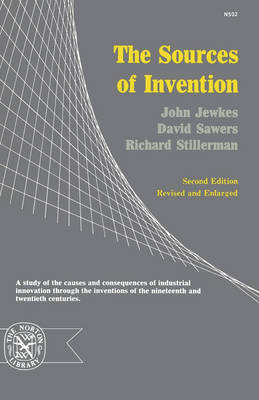The first edition of The Sources of Invention, published in 1958, has been described as "a classic in science policy which has had a very considerable influence on both economists and scientists in Europe and in the United States." The authors set out to study the causes and consequences of industrial innovation--one, if not the main, spring of economic progress. They examined the important inventions of the nineteenth and twentieth centuries in order to discover just how far recent inventions have emerged from conditions different from those of the past. The evidence collected threw light on many questions, such as the influence of large research institutions and the concept of teamwork, the arguments for monopoly in industry, and the possibility of predicting inventions.
The second edition is a considerable enlargement of the first. To the original group of fifty-one case histories--which included Automatic Transmissions, Fluorescent Lighting, the Helicopter, Kodachrome, Polyethylene, Synthetic Detergents, the Transistor, and Xerography--have now been added ten other recent important cases, each of which has its own fascinating peculiarity: Air Cushion Vehicles; Chlordane, Aldrin, and Dieldrin; Electronic Digital Computers; Float Glass; the Moulton Bicycle; Oxygen Steelmaking; Photo-Typesetting; the Cure for Rhesus Haemolytic Disease; Semi-Synthetic Penicillins; and the Wankel Engine. A new chapter evaluates the relevant literature of the last ten years.
- ISBN10 039300502X
- ISBN13 9780393005028
- Publish Date 17 February 1971 (first published 1 January 1969)
- Publish Status Active
- Publish Country US
- Imprint WW Norton & Co
- Edition 2nd ed.
- Format Paperback (US Trade)
- Pages 388
- Language English
